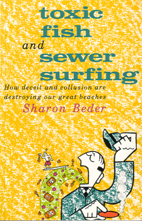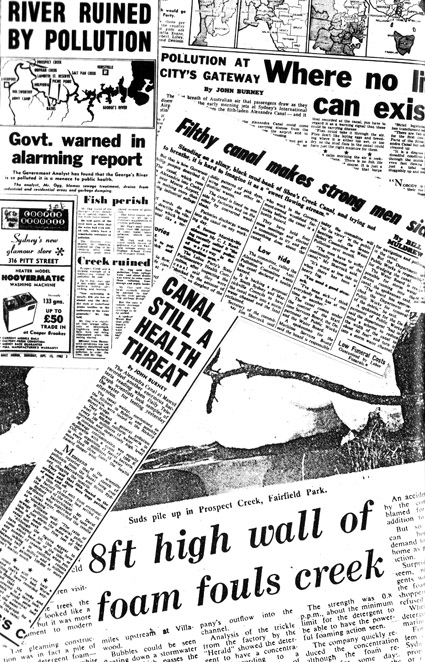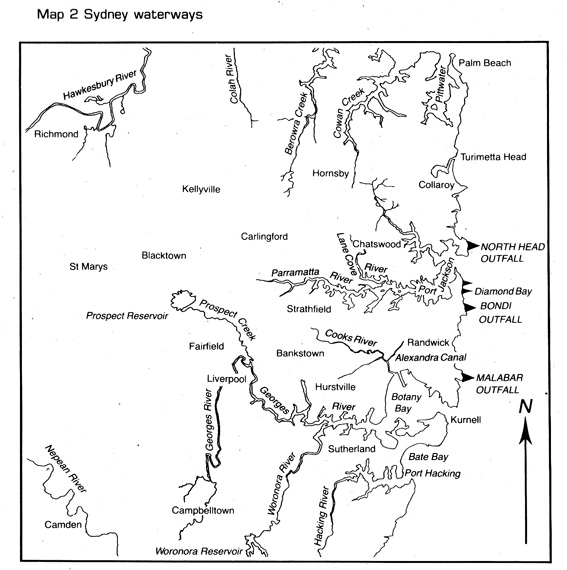
by Sharon Beder
first published by Allen & Unwin, Sydney, 1989
Introduction
Sewers seaward
Toothless watchdog
Toxic fish
Sewer-side surfing
Public relations battle
Events of 1989
Beyond Sydney
Conclusion
Bibliography
As SYDNEY grew, new industries sited themselves near waterways so as to take advantage of what seemed to be a free waste disposal system. With so many industries pouring their waste directly into the waterways, the public became increasingly conscious of this form of pollution. In September 1962, the Government Analyst, Mr Ogg, caused a stir when he reported on the condition of the Georges River, which he said was a menace to public health. Ogg found that in parts of the river even eels, notorious for their tolerance of pollution, had been killed. In 1966 it was reported that thousands of fish had been killed in the Parramatta River. In mid-1969 the Sun published an article about the Alexandra Canal headlined ‘Filthy canal makes strong men sick’. The canal was described as ‘nothing more than a stinking industrial sullage channel’, ‘vile smelling’, with thick black water ‘dotted with psychedelic patterns of pink dyes, scrap metal and other industrial wastes’. The Herald described the Alexandra Canal in 1970 as ‘Sydney’s blackest stretch of water’. It quoted the Metropolitan Hea1th Officer as saying it presented no health risk because even bacteria could not survive the contamination!

The realisation that water pollution was reaching crisis proportions in New South Wales was strengthened by a Senate Select Committee on Water Pollution in Australia which tabled its report in June 1970. Following two years of investigations, the Committee found the conditions in New South Wales were repeated throughout Australia and that pollution of some waterways was so bad that they could no longer be used for anything except sewers. The reliance on private conscience hat failed to protect rivers and streams. ‘Easily measured private profits’ had been used ‘as a facile argument to justify intangible and immeasurable social losses’.
